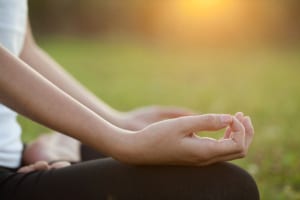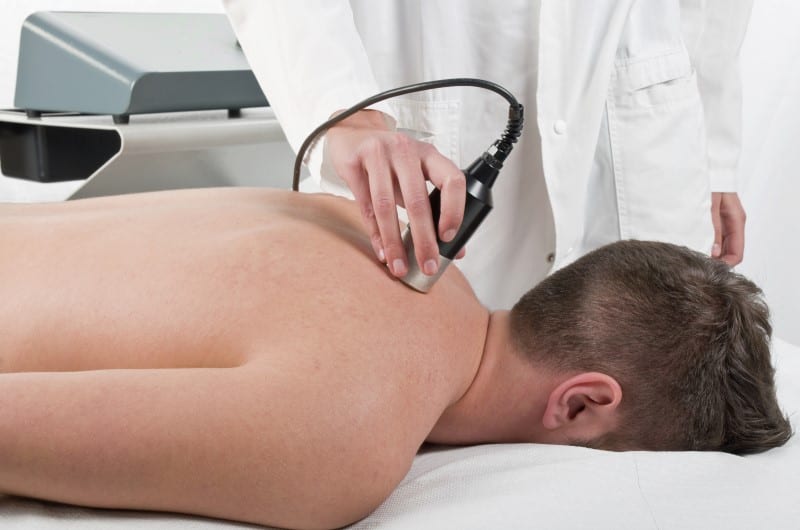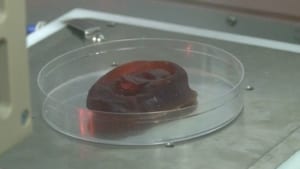At The Robin Kiashek Clinics, we believe in a holistic approach to your general health. Therefore, as well as assisting patients with conditions that are currently causing them pain, we also look to encourage and promote other preventative techniques and practices such as meditation and mindfulness. After reading about some exciting new research in this field, we thought we would share some of the findings with you.
The benefits of regular meditation
We have long known of the benefits to body and mind from regular meditation and focused relaxation, but the evidence has often been dismissed as anecdotal. Now, across the world, we are seeing more and more studies into what happens to us physically when we engage in this kind of mindfulness activity regularly.
What is mindfulness and meditation?

Before we discuss this latest research, let’s briefly touch on what meditation and mindfulness is. Meditation has been traditionally associated with the Buddhist faith and is considered to be a state of contemplation or prayer. Nowadays it is considered to be the practice of sitting quietly with one’s thoughts or focusing on breathing. The idea is to keep your mind in the present moment, calmly clear your mind of any particular thoughts, whilst in a lying or seated position, and becoming aware of the energy coursing through the body in order to relax.
Mindfulness is similar, in that it is a the practice of remaining present and becoming conscious of your thoughts, how they spring up, what they are telling you about your situation and learning how to observe those thoughts with a view to overcoming any negativity. It can also be practiced whilst going about daily tasks, by way of stepping back and being more aware of how we are feeling or acting.
Recent studies of brain activity
A very recent study used MRI (magnetic resonance imaging) scanning to prove conclusively that meditation can affect grey matter positively, causing it to undergo large, observable changes.
The work has been carried out in the Massachusetts General Hospital (MGH). The project’s director, Sara Lazar, has concluded that during an average daily 27-minute meditation, the very structure of the brain alters. These changes lead to prolonged positive and relaxed feelings, and if sustained over a period of 8 weeks, result in significant changes and improvements in emotional life, as well as in the body.
In previous studies by Lazar’s team, the area of the brain that relates to attention and emotional integration, the cerebral cortex, has been shown to thicken in regular practitioners of meditation, more so than in subjects who had no previous experience in such activities.
Changes in our ‘dinosaur brain’
What is more, in the amygdala, the part of the brain often referred to as the ‘dinosaur brain’, responsible for regulating anxiety and stress reactions, there is a decrease in density of grey matter, meaning that the body is less likely to respond in a stressed way when faced with displeasing or adverse situations.
None of this brain activity was observed in the group of subjects who did not engage in mindfulness practice during the period of the study. No growth boosts in the brain were found. This showed without doubt that changes in the brain were not part-and-parcel of time simply passing, but that consistently engaging in mindfulness drastically changes grey matter.
The brain can be changed
Now we know more about the brain’s incredible plasticity, and we also have more confidence in encouraging human beings to be pro-active in their own brains’ re-structuring. It is now a certainty that the brain can be assisted into a state that leads to enhanced health and improvement in emotions and relationships, as well as increasing our ability to cope with stress.
Meditation to cope with stress
So, in light of the research above, might you consider introducing a regular mindfulness or meditation practice into your daily routine? Just 30 minutes per day, either first thing in the morning or last thing at night can help to make fundamental changes that will help the brain to cope with negative emotions such as stress or anxiety. These types of negative emotions may end up leading to more serious mental or even physical complaints (many of which we can help to treat in clinic), so it is wise to have a strategy to combat them.
Wellness and The Robin Kiashek Clinics
Wellness is at the heart of scientific endeavour, and here at Robin Kiashek Clinics we use the latest studies in diverse fields to keep our services on the cutting edge. To find out more about what we offer and our holistic approach to your health, please call us on: 0208 815 0979.

![AdobeStock_54976863 [Converted]](https://www.robinkiashek.co.uk/wp-content/uploads/2018/12/AdobeStock_54976863-Converted-300x300.jpg) It is actually a very common reason a person will suffer from pain in their heel and is caused by an inflamed or swollen plantar fascia (which is the fascia connecting your heel bone to your toes and supports your foot arch). This condition can cause immense pain when you stand-up or put pressure on it which is caused by a build-up of calcification at the point where the fascia meets the heel bone.
It is actually a very common reason a person will suffer from pain in their heel and is caused by an inflamed or swollen plantar fascia (which is the fascia connecting your heel bone to your toes and supports your foot arch). This condition can cause immense pain when you stand-up or put pressure on it which is caused by a build-up of calcification at the point where the fascia meets the heel bone. I am a keen advocate of the benefits of exercise as part of the journey to health restoration. I therefore wholeheartedly back the government scheme that means NHS patients will be prescribed exercise as part of ongoing treatment for certain conditions.
I am a keen advocate of the benefits of exercise as part of the journey to health restoration. I therefore wholeheartedly back the government scheme that means NHS patients will be prescribed exercise as part of ongoing treatment for certain conditions. Low Level Laser Therapy (LLLT) is a treatment that can speed up certain healing processes by using specific wavelengths of light to interact with tissue. It has been effective in treating a variety of chronic and acute conditions in order to enhance functionality and to reduce pain, swelling and spasms. Some conditions that respond particularly well to LLLT include:
Low Level Laser Therapy (LLLT) is a treatment that can speed up certain healing processes by using specific wavelengths of light to interact with tissue. It has been effective in treating a variety of chronic and acute conditions in order to enhance functionality and to reduce pain, swelling and spasms. Some conditions that respond particularly well to LLLT include:
